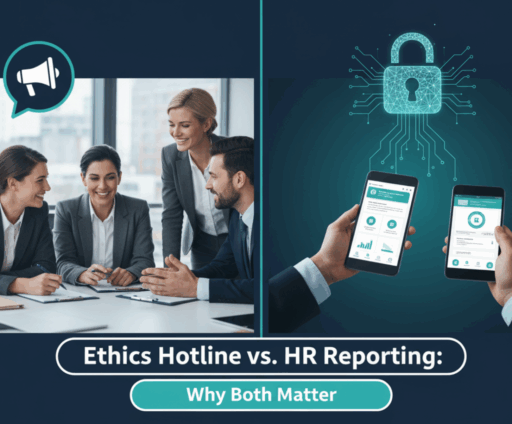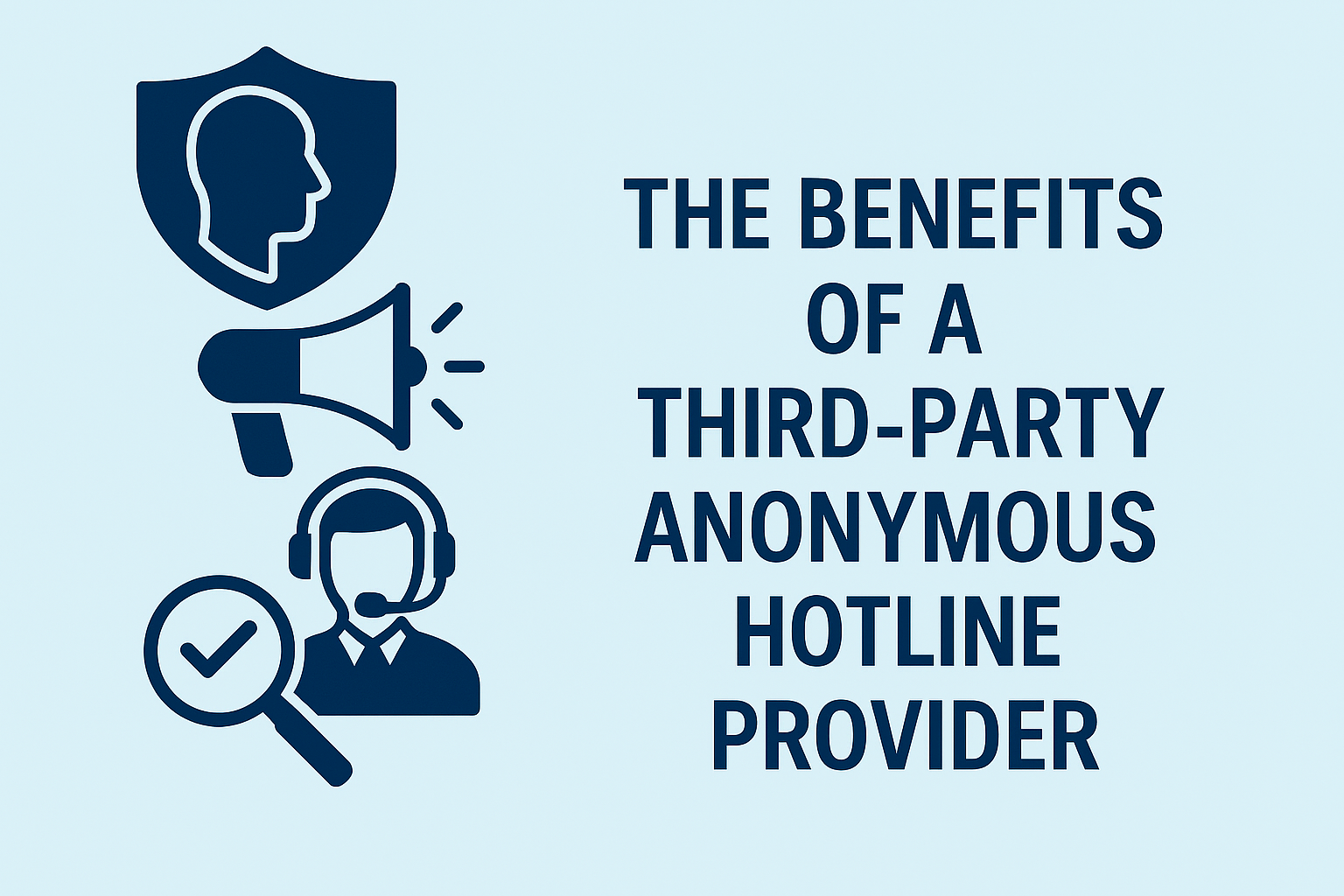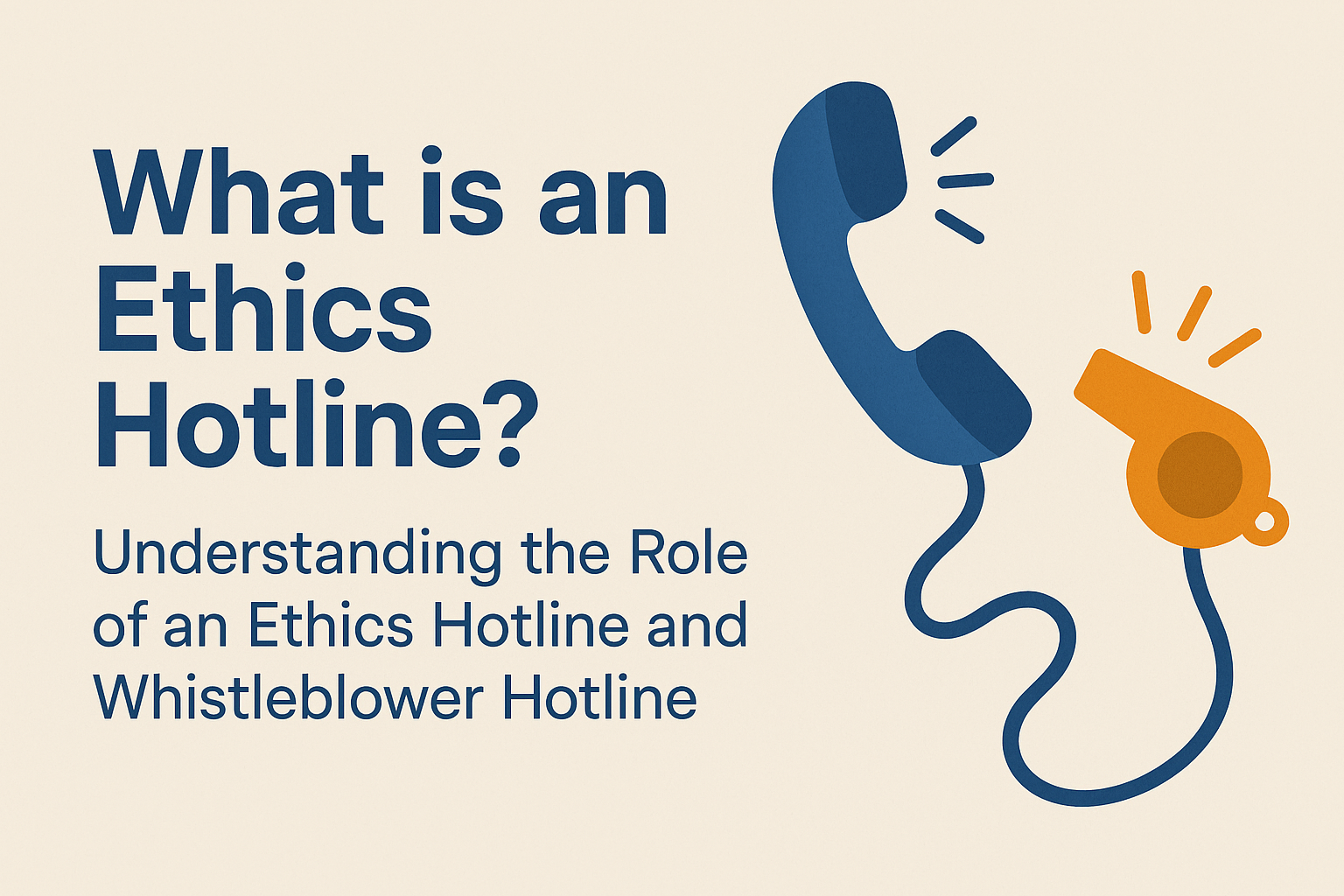
When it comes to reporting misconduct in the workplace, employees often face a critical question: should I go to HR or use the ethics hotline? The truth is, both options are essential but serve distinct purposes. Understanding the differences—and how they complement each other—is fundamental to building a truly robust and trustworthy reporting infrastructure.
In this post, we’ll break down the HR vs ethics hotline debate, explain why independence in the reporting process is crucial, and show how these tools work together to protect both employees and organizations.
HR Reporting: The Traditional and Essential Path
Human Resources (HR) departments are the cornerstone of employee relations. They are the go-to resource for a wide range of everyday workplace issues. Employees typically turn to HR for:
- Interpersonal disputes or team conflicts.
- Workplace accommodations and leave requests.
- Benefits administration and general policy questions.
- Performance management and career development.
HR professionals are trained to mediate conflicts, enforce company policies, and ensure compliance with labor laws. However, because HR is an internal part of the organization’s management structure, there can be a perceived or actual conflict of interest—especially when a sensitive issue involves senior leadership, systemic misconduct, or an HR representative themselves. This is where the distinct value of an independent ethics hotline becomes evident.
What Is an Ethics Hotline?
An ethics hotline, often hosted by a third-party provider like Red Flag Reporting, is a secure and independent channel for the intake of reports. Its primary purpose is to ensure that a concern is documented and safely transmitted to the appropriate internal parties for investigation. These hotlines are designed to provide neutrality and independence in the initial reporting process, giving individuals a safe space to speak up without fear of their identity being compromised.
The crucial differentiator is the hotline’s role in receiving and securely routing a report to the appropriate parties within the company. The third-party provider documents the information and forwards it to designated individuals (e.g., HR, Legal, or a compliance committee) for investigation. Many hotlines also offer the ability for the anonymous reporter to have a secure, two-way dialogue with management, allowing them to provide more information and receive updates without revealing their identity.
Common issues reported through ethics hotlines include:
- Fraud or financial misconduct.
- Serious harassment or discrimination.
- Safety violations and regulatory non-compliance.
- Retaliation for speaking up.
- Code of conduct breaches by senior leaders.
Learn more about what an ethics hotline is here.
HR vs. Ethics Hotline: A Direct Comparison
To help clarify the roles of each, here is a quick comparison of the key differences between HR vs ethics hotline:
| Aspect | HR Reporting | Ethics Hotline |
| Ownership | Internal (HR department) | External, independent third-party |
| Anonymity | Rarely anonymous; typically requires identity for investigation | Often anonymous or confidential |
| Focus | Employee relations, policy compliance, and day-to-day issues | Misconduct, fraud, ethics, and legal violations |
| Perceived Bias | Possible (part of management structure) | Minimal (independent reporting channel) |
Both serve important roles, but independence is the ethics hotline’s biggest advantage. When employees believe their concerns will be documented fairly and distributed appropriately, and without retaliation, they are far more likely to speak up.
The Importance of an Alternative Reporting Channel
It’s vital to understand that an independent hotline doesn’t replace the possibility of reporting issues directly to management or HR; rather, it provides a safe and secure alternative. Its value is not in handling a different type of issue, but in providing another way to communicate a concern when an employee is hesitant to do so through traditional channels.
This alternative channel is critical when an employee is reporting a sensitive issue and has concerns about:
- Fear of Retaliation: The hotline provides a secure, often anonymous, channel for communication, removing the risk of personal reprisal.
- Conflicts of Interest: It is the ideal path for reports that involve a direct supervisor, a member of the HR team, or senior leadership, ensuring the concern is routed without fear of bias.
By offering this alternative, organizations empower employees to speak up about anything from a minor policy question to significant illegal or unethical behavior, without having to determine if their issue is “important enough” for a specific channel. The hotline simply serves as a confidential and reliable conduit to ensure the concern is documented and delivered to the right internal team for action.
Why Both Mechanisms Are Essential
Some organizations mistakenly think they can choose one over the other. In reality, HR and ethics hotlines complement each other to create a comprehensive reporting ecosystem.
The ethics hotline acts as a secure front door for sensitive issues, ensuring that reports are captured and safely routed to the appropriate internal parties (often HR, a compliance team, or an audit committee) for investigation and resolution. This partnership empowers internal teams to handle serious, confidential matters that might otherwise be intimidating for an employee to report directly.
- HR handles the majority of routine employee issues, fostering positive employee relations and ensuring compliance with everyday policies.
- The independent ethics hotline provides a crucial alternative for high-risk reports, acting as a vital backstop that captures issues that might otherwise go unreported.
Implementing both systems and communicating their purpose clearly sends a powerful message to employees: their concerns are valued, and there are multiple, trusted avenues for reporting them.
Best Practices for Organizations
To maximize the effectiveness of both your HR and ethics hotline systems, consider these best practices:
- Communicate Clearly: Actively promote both reporting channels and clearly explain their distinct purposes and when to use them.
- Ensure Accessibility: Make reporting easy through multiple channels, such as a phone number and website.
- Protect Confidentiality: Emphasize and enforce anonymity options and strict anti-retaliation policies to build trust.
- Train and Educate: Provide training for all employees and managers to build awareness and confidence in the reporting process.
- Act Promptly: When a report comes in, whether from HR or an ethics hotline, investigate it thoroughly and take decisive, corrective action.
The question isn’t HR vs ethics hotline—it’s how to use both effectively. By leveraging the unique strengths of both HR and an independent ethics hotline provider, organizations can build a stronger, more transparent, and ultimately more successful workplace culture where every voice can be heard.
Read what another credible source has to say about ethics hotlines here.
Ready to learn more about implementing an independent ethics hotline service? Contact us.
Reach Us
Red Flag Reporting
P.O. Box 4230, Akron, Ohio 44321
Tel: 877-676-6551
Fax: 330-572-8146



